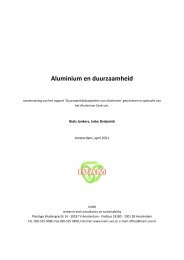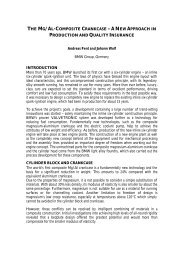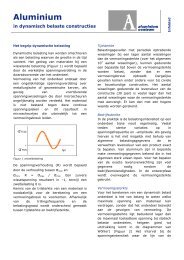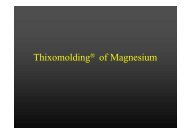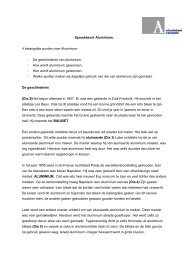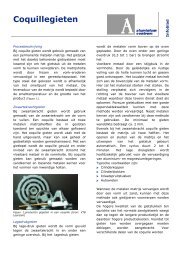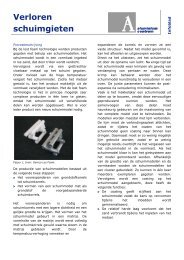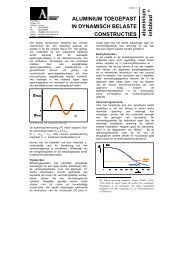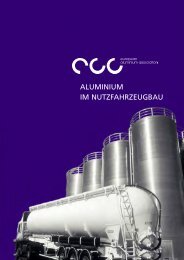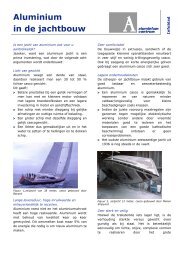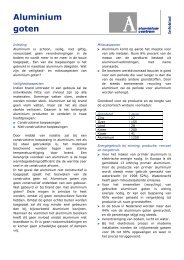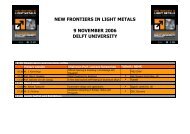2-Dr. Merete Hallenstvet - Het Aluminium Centrum
2-Dr. Merete Hallenstvet - Het Aluminium Centrum
2-Dr. Merete Hallenstvet - Het Aluminium Centrum
Create successful ePaper yourself
Turn your PDF publications into a flip-book with our unique Google optimized e-Paper software.
exterior surface facing the exterior. The outer surface of the inner section and the innersurface of the outer section are normally facing each other. If so, these internal surfaces canexchange energy by radiation.In general there are three mechanisms for heat transport; thermal conduction, convection and,and thermal radiation. In aluminium frames with proper application of thermal breaks, up to65% of the remaining heat transfer through the frame is caused by thermal radiation betweenthe inner and outer sections. A further improvement of the thermal characteristics of thealuminium frame thus requires minimisation of irradiative heat transfer losses. The heattransfer caused by thermal radiation is governed by the thermal emittance properties of thesection surfaces. To reduce thermal heat transfer in windows and doors it is especiallyimportant that the thermal emittance of the internal and interior surfaces is kept as low aspossible. The emittance of the exterior surface is of less importance due to its larger heattransfer by convection.Thermally low emissive surfaces can, among others, be made by adding aluminium flakepigments to a powder coating. The principal idea of the present work is to utilize the highreflectivity of the aluminium flakes in the thermal range of the spectrum (2-50 µmwavelengths) to obtain low emissivity. Since polymers are absorbing heavily in thiswavelength range it is crucial to obtain a high lateral coverage of the surface by thealuminium flakes, to ensure that the flakes are located near the outer surface of the coating,and that they are aligned parallel to it.Unfortunately a high aluminium pigment concentration at or close to the coating surfacewill cause the coating to be less chemically stable and more susceptible for corrosion andchemical degradation. An important task for making a resistant low emissivity coating istherefore to balance between the requirements for low emissivity and chemical stability.EXPERIMENTALThe powder coating systems used in this study is based on a polyester binder systemcontaining commercially available aluminium flake pigments. The pigments are mixed withthe rest of the coating chemicals using standard extrusion or bonding processes.Application of the coatings has been done by both handheld (lab) and automatedelectrostatic powder guns in line using a Gema Optitronic Type CG03. Applying powderscontaining large amounts of metallic pigments require fine tuning of powder coatingequipment because the polymer particles are difficult to charge. The powder is cured at 10minutes @ 200°C in a standard convection oven.Chemical resistance of coated samples is measured simply by dipping the coated samples in10% w/w HCl for 8h. This exposure corresponds to 1000 h in an acidified salt spray test(ASS) following the ASTM G85-94 standard, for the types of samples in question.The degree of chemical degradation is determined by using the L-value from standardcolour measurements. The L-value is used as a quantitative measure of how much visiblelight a surface will reflect. Degradation of a surface will normally result in a decrease in themeasured L-value, i.e. the surface becomes darker. A reduction in L-value by 1 percentagepoint is normally not visible for our eyes.



